33 The Paywall & Open Access
Libby Wheeles; Helena Marvin; and Tim Nelson
Introduction
As we’ve mentioned in previous weeks, access to scholarly research can be very expensive. This chapter covers some important concepts to help you understand:
- who profits from high cost barriers to academic research
- why doing academic research on the open web is challenging (compared to using the library)
- why some research is available for free
This information will help you make informed decisions about where to search for scholarly sources. It will also provide you with helpful foundational information about the scholarly publishing landscape if you decide to pursue more advanced research.
Paywalls
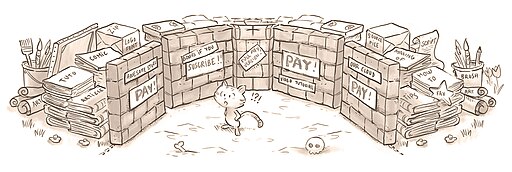
A paywall refers to the cost barrier between a potential reader/viewer and the content they wish to access. In other words, when you have to subscribe to a newspaper or streaming service to see content, or pay to individually access a journal article outside your library, you are encountering a paywall.
In theory, paywalls are not inherently a bad thing. Many people work hard to get scholarly materials from the idea stage to the well-formatted, accessible document/video/etc. that you view in print or on your computer. See the previous chapter for a review on the roles people play in the process of scholarly publishing (researchers, editors, reviewers, publishers, and librarians). Just like any other job, these people engage in labor and reasonably expect compensation for their time, skill, and materials.
Who Profits?
The traditional scholarly publishing model means that publishers, rather than researchers, see most of the profits from this work:
- Researchers receive salaries and grant funding to complete their research. (Much of this grant funding has historically come from the federal government.) Once the research is completed, they are typically no longer making money from that research.
- Peer reviewers do not receive any compensation for their work. Traditionally, it has been considered part of their responsibilities as fellow researchers in their field.
- Publishers do add value to the research process, which does require compensation. They facilitate the peer review process, often provide final editing and formatting, and publish/host/market the final product (in print, through digital platforms, or both).
- Typically, publishers, not researchers, own the rights to the final version of a scholarly manuscript. When individuals, libraries, or other institutions pay for access, that money goes to the publisher.
Many people consider this system unfair for several reasons. These include:
- Many academic publishers set high prices for access to the research they publish. As an industry, academic publishing has high profit margins.
- Publishers are benefiting from work provided to them for free (from researchers and peer reviewers).
- Taxpayers are paying twice over for research: once, in the form of grants awarded to researchers to complete their work, and twice, in the form of libraries/institutions paying publishers to access that research, with government funds funneled to public institutions and library budgets.
Important: These disparities differ by individual publisher and academic field.
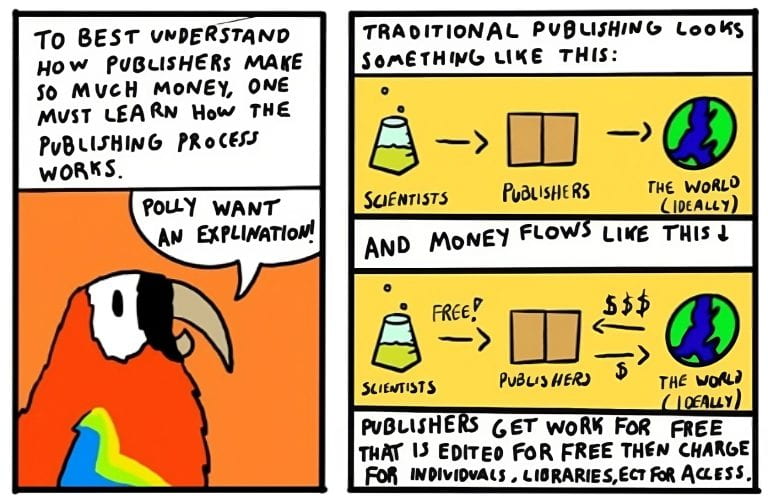
Another take on this system (all rights reserved to the creator):
The Role of the Library
A significant portion of a library’s budget goes toward purchasing individual materials as well as subscriptions to databases or packages of journals on an annual basis. Access to research is a requirement for a university to function well, and being the go-between between researchers and publishers is one of the library’s most important jobs.
Using the library’s search tools helps you (a) find scholarly materials and (b) access those materials for free. You will not find everything that might be useful to your research topic available on the open web.
The Future of Library Budgets
Year to year, libraries face a rising challenge with affording the cost of scholarly research. Because libraries purchase access on an annual basis, the price can be increased every year, and libraries must do their best with flat or sometimes decreasing budgets to afford to keep the same journals they provided for their institution in previous years. These rapidly escalating prices are referred to as the serials crisis (the words serials and periodicals – things published periodically, like academic journals or magazines – are often used interchangeably).
The problem is especially apparent in sciences research (as compared to humanities). Here’s a chart illustrating the price escalation in two disciplines from 2001 to 2025:
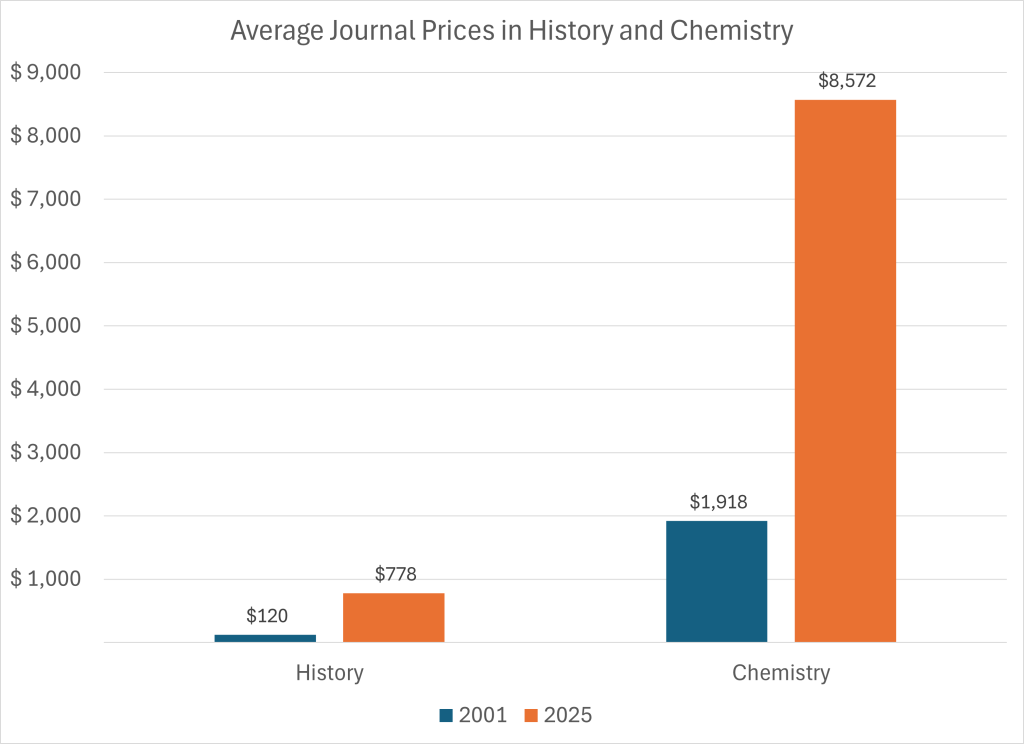
The price of library subscriptions has been rising faster than inflation for several decades, and the funds available to libraries have generally been declining. The chart above uses the average prices of History journals (one of the least expensive) and Chemistry journals (one of the most expensive) to demonstrate how quickly these costs have risen. Both are more than four times as expensive in 2025 as they were in 2001. In comparison, the Consumer Price Index (CPI), a general measure of inflation for everyday customer products like food and gasoline, only went up by 81% (https://www.bls.gov/cpi/) during this period.
An Alternative Model: Open Access
Scholarly sources that are published open access are available digitally for free under one of several license types (e.g., Creative Commons). Sometimes, articles are available open access because researchers have paid a fee up front to publish their work.
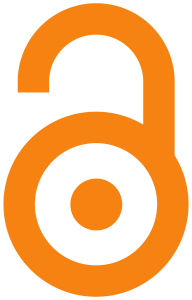
Open access is an increasingly popular option for publishing. It has several benefits:
- Research that is published open access often gets more exposure, since more people can read it for free.
- Researchers from less well-funded institutions (either in the West or from developing countries) can access more materials.
Often, open access materials are marked with the open lock symbol (shown on the right).
Search tip: If you rely only on publicly available search engines (like Google or Google Scholar), a lot of the research you find is probably going to be materials that were published open access. This opportunity can be extremely helpful, but remember, do not only rely on open access materials if you have access to a library. A lot of scholarly research is still published under the traditional model and you will miss valuable materials by not learning how to use your library for research.
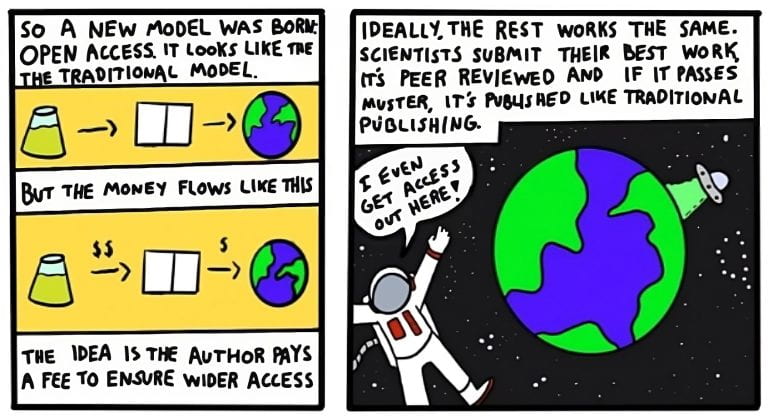
Watch the video below for an overview of open access and how it compares to previous publishing norms.
Problems with Open Access
Increasing the amount of scholarship that can be accessed free online is a lofty goal. There are, however, some complications with different models of implementing open access. These include:
- Concerns about the quality of material published open access vs. through traditional publishing routes.
- Placing a financial burden on researchers hoping to publish their work. Often, materials are made open access because the researchers pay a fee (sometimes an exorbitant one) to the publishers to make their work open. This model costs more to researchers and prevents work from less well-funded institutions (including those in developing countries) and in less well-funded fields from being published.
For a humorous take on a serious issue in academia (all rights reserved to the creator):
Key Takeaways
- Publishers are the main stakeholders who profit from the work of scholarly research.
- Access to academic research is increasingly expensive, putting strain on library budgets.
- Publishing open access is a helpful alternative model to traditional publication, but comes with complications like quality concerns and undue fee burdens on researchers hoping to publish their work.

